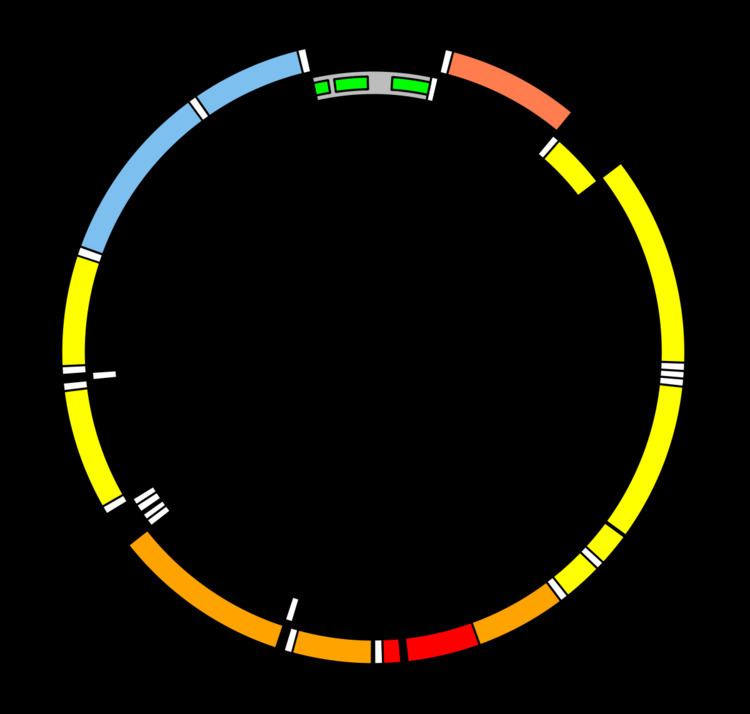Species Human Entrez 4513 | Human Mouse Ensembl ENSG00000198712 | |
 | ||
Aliases COX2, mitochondrially encoded cytochrome c oxidase II, COII, MTCO2, Cytochrome c oxidase subunit II, CO II External IDs OMIM: 516040 MGI: 102503 HomoloGene: 5017 GeneCards: COX2 | ||
Cytochrome c oxidase subunit 2, also known as cytochrome c oxidase polypeptide II, is a protein that in humans is encoded by the MT-CO2 gene.
Contents
Cytochrome c oxidase subunit II, abbreviated COXII, COX2, COII, or MT-CO2, is the second subunit of cytochrome c oxidase.
Structure
Cytochrome c oxidase (EC 1.9.3.1) is an oligomeric enzymatic complex which is a component of the respiratory chain and is involved in the transfer of electrons from cytochrome c to oxygen. In eukaryotes this enzyme complex is located in the mitochondrial inner membrane; in aerobic prokaryotes it is found in the plasma membrane. The enzyme complex consists of 3-4 subunits (prokaryotes) to up to 13 polypeptides (mammals). In Leigh's disease, there may be an abnormality or deficiency of cytochrome oxidase.
Function
Subunit 2 (COII) transfers the electrons from cytochrome c to the catalytic subunit 1. It contains two adjacent transmembrane regions in its N-terminus and the major part of the protein is exposed to the periplasmic or to the mitochondrial intermembrane space, respectively. COII provides the substrate-binding site and contains a copper centre called Cu(A) (see InterPro: IPR001505), probably the primary acceptor in cytochrome c oxidase. An exception is the corresponding subunit of the cbb3-type oxidase which lacks the copper A redox-centre. Several bacterial COII have a C-terminal extension that contains a covalently bound haem c.
The N-terminal domain of cytochrome C oxidase contains two transmembrane alpha-helices.
